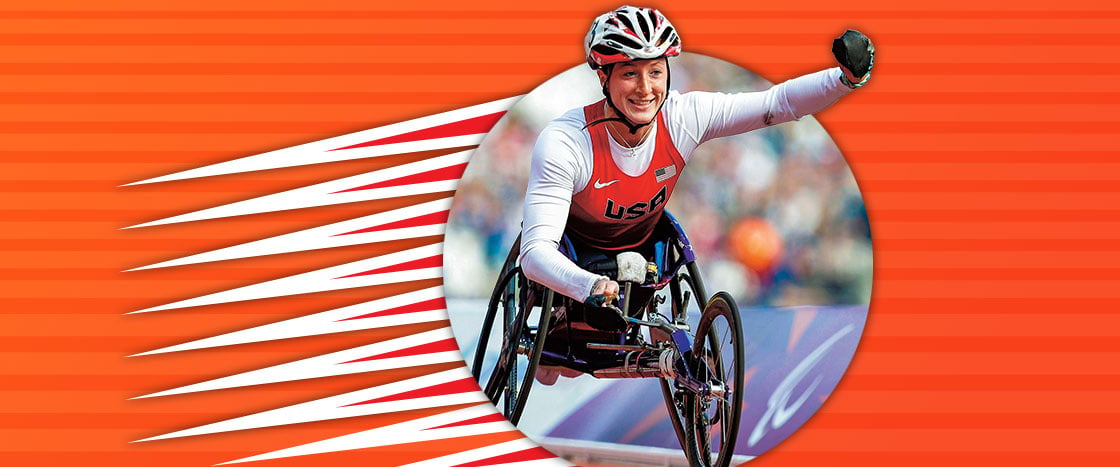Tatyana McFadden was flying through the streets of New York City. She bent over her racing wheelchair, her powerful arms churning as she pushed herself forward. Her muscles felt like they were screaming. Icy November winds stung her eyes. But she didn’t slow down.
Tatyana was less than a mile away from finishing the 2014 New York City Marathon, a grueling 26.2-mile race. And she was in the lead. If Tatyana came in first, she would achieve what’s known as a Grand Slam—winning the world’s four biggest marathons in one year.
“GO, GO, GO!” the crowd roared.
Tatyana swerved quickly around a turn toward the finish line . . . and suddenly felt the wheels of her chair lift off the ground.
CRASH! She slammed against the pavement as her wheelchair clattered to the ground.
Had Tatyana’s Grand Slam dreams just come crashing down?
Tatyana McFadden was flying through the streets of New York City. She bent over her racing wheelchair as she pushed herself forward. Her muscles felt like they were screaming. But she didn’t slow down.
It was November 2014. Tatyana was less than a mile away from finishing the New York City marathon. She had raced through almost 26.2 miles. And she was in first place. If Tatyana won the race, she would earn a Grand Slam. That’s when an athlete wins the world’s four biggest marathons in one year.
“GO, GO, GO!” the crowd roared.
Tatyana turned quickly toward the finish line. Suddenly, she felt the wheels of her chair lift off the ground.
CRASH! She hit the pavement as her wheelchair fell to the ground.
Had Tatyana’s dreams of winning the Grand Slam just come crashing down?

